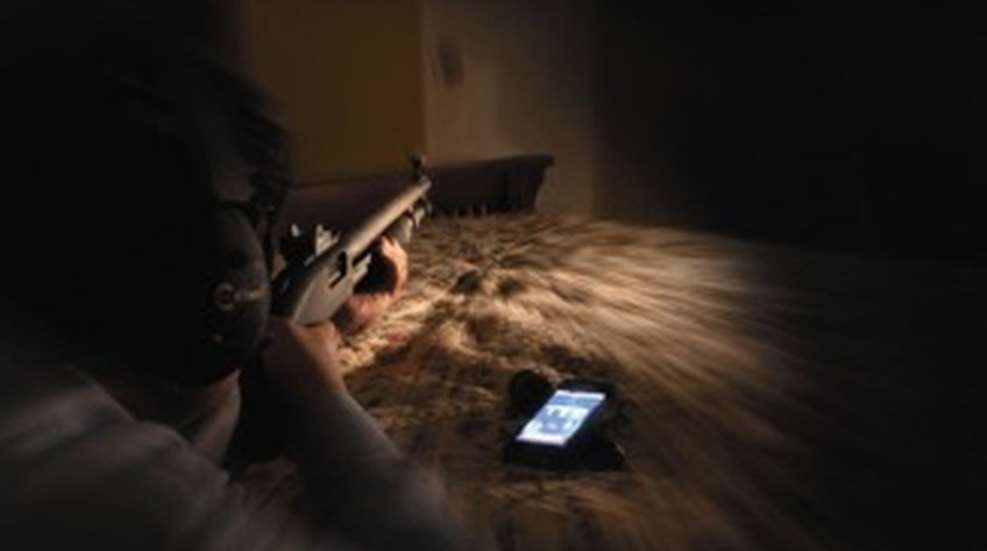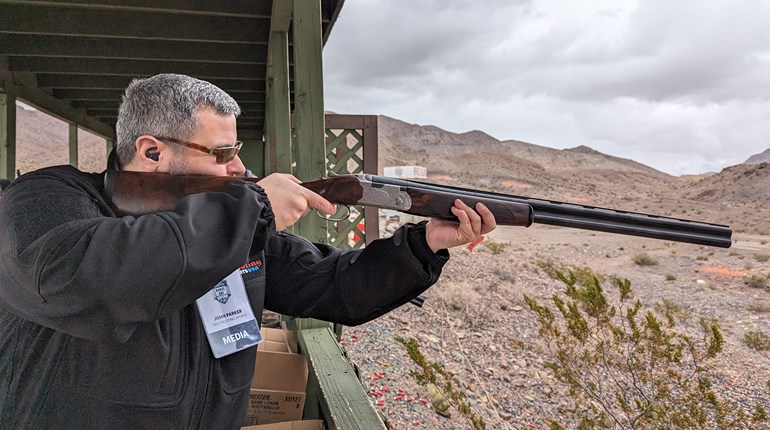
The 12-gauge has become the standard size shotgun for self-defense, but that doesn’t mean smaller gauges don’t offer some advantages; namely, recoil reduction for added control and lighter weight so they’re easier to wield. And if a shooter can control the firearm better, faster follow-up shots and enhanced accuracy become an important by-product. Here are some facts and opinions about sub-gauges for defense.
If you can handle the recoil and shoot a 12-gauge shotgun well, there’s little reason to consider using a smaller gauge for self-defense. After all, when your life is on the line, the more lead you can throw downrange at your attacker is almost always better. But recently I discovered that my 70-year-old mother simply didn’t practice with her handgun enough to remember how to load and shoot it. So I was compelled to give her a double-barrel shotgun because its use is straightforward: Put the shells in, close the action, point it and pull the trigger. But then I discovered she was not strong enough to hold a big 12-gauge up to her shoulder for more than a couple seconds. And I feared what the recoil would do to her, so I opted to give her a 20-gauge loaded with 1-ounce loads of No. 4 shot. I feel good about this decision.
The fact remains, however, that anyone who tells you, “A 20-gauge is just as good as a 12” or that a “28 is just as good as a 20” is not speaking from a mathematical, terminal performance perspective, but a personal one. Here’s a short version of the truth.
Gauge is an old British measurement for the diameter of a gun’s bore. Technically, it’s a count of the number of pure lead balls, of a given bore diameter, that add up to equal a pound. Twelve lead balls of .729 –inch diameter equal a pound. Therefore, a bore of .729 diameter is called 12-gauge. In other words, all 12-gauges before they are constricted, or choked, to optimize their pattern measure .729-inch in diameter. (Some vary slightly depending on manufacturer, but this is the standard size.)
12-ga. = .729”
16-ga. = .662 “
20 ga. = .615”
28 ga. =.550”
.410 bore = .410” (This cartridge was made in America and was simply named for its bore’s diameter.)
The larger the bore’s diameter, the greater ability it has to expel more lead pellets in a shorter time. (Think of a large diameter water hose vs. a smaller one.) But a shotgun’s pattern also depends on the load, or shell, chosen. For example, a handloader could load a miniscule amount of pellets in a 2 3/4-inch long 12-gauge shell to give it a lesser payload (the amount of lead pellets, measured in ounces), than a 20-gauge shell. But for the purpose of this article, we’ll stick to the average, commercially available payload weights for the various gauges. Payload weight influences the shell’s terminal energy (knock-down power and performance) as well as greatly influencing recoil. While loads vary wildly, and buckshot loads are often have lighter payloads than bird-shot loads because there is more air space between the larger pellets, common payload weights are as follows:
12-ga. 11/8 oz – 11/4-oz.
16-ga.= 1 oz -- 1 1/8 oz.
20-ga. = 7/8 oz. -- 1 oz.
28-ga. = ½ oz -- ¾ oz.
.410-bore = ½ oz -- 11/16th oz.
Recoil is a Big Deal: If choosing one of these loads in a shotgun weighing 7 pounds, then the lighter the payload (if velocity is equal) means the shooter will experience less recoil. But it’s not that simple. Generally, smaller gauge shotguns also weigh less, so recoil negation in them will not be as pronounced as if guns all weighed the same. And, if you shoot an ultralight 20-gauge, for example, with a heavy load, you could actually receive more recoil than the heavier 12-gauge gun. In other words, if you want the lightest recoiling gun possible, shoot the lightest load in the heaviest gun possible. But of course this gun and load would likely be impractical for home defense.
Terminal Performance: Shotgun energy is also very complicated. Consider a 00 Buckshot pellet from a 12-gauge shotgun that leaves the muzzle at 1,200 feet-per-second (fps). Mathematically, that individual pellet produces the exact same energy as a 00 buck pellet going the same speed fired from a .410 bore. The difference is that .410-bore might only send 5 pellets to the target, whereas the 12-gauge could fire up to 15. In sum, the average 12-gauge buckshot load delivers much more energy to the target compared to the .410. But it also has nearly twice the recoil. The point is, if you choose to use a sub-gauge, don’t negate its lighter recoil advantage by using a heavy load or getting too light of a gun. Rather, use an average load in an average weight gun, and if you feel you can handle more, try a bigger gauge. If you feel it’s too much, consider a smaller gauge.
Typical Recoil and energy measurements with common loads and gun weights
Gauge gun weight load recoil force (ft.-lbs.) muzzle energy (ft.-lbs.)
12 ga. 8 lbs. 12-pellet 00 Buck @1,225 fps 27.5 2150
16 ga. 7.5 lbs. 12-pellet No. 1 Buck @1,225 fps 21.6 1620
20-ga. 7 lbs. 24 pellet No. 4 Buck @ 1,100 fps 20 1335
28-ga. 6.5 lbs. ¾ oz, No. 6 birdshot @ 12,95 fps 14.9 1222
.410 6 5 pellet 000 buck @ 1,135 fps 14.3 1000
In sum, if you are a man or woman of adult strength, dexterity and toughness who practices proper fundamentals, a 12-gauge is superior. Any quality pump action or semiauto with a relatively short barrel will do. Try 00 buckshot loads with 12 pellets going around 1,200 fps. All major brands make them. If you prefer a lighter gun that you can handle better along with less recoil, go with an average weight 20-gauge, and make sure it has a great recoil pad. An automatic action greatly mitigates recoil, and if kept clean, is uber-reliable. Plenty of tactical experts swear by a 20-gauge because it has plenty of energy to stop a threat, yet in general the guns are lighter and easier to wield than a 12.
I would skip 16-gauges and 28-gauges, because their recoil-to-energy ratios are so close to that of the 12-gauge and the 20-gauge, respectively, that it’s not worth the scarcity of gun options and loads for them. Ammo for them is also expensive. If a 28- or 16-gauge is all you have, however, it’ll certainly do the job.
The .410-bore is interesting. If you can find a reliable pump, semi or even a good double-barrel .410 that’s easy to wield, this gauge offer tremendous recoil relief compared to a 12 or even a 20. And while it is half as powerful as the average 12-gauge, consider that a modern five-pellet 000 Buckshot load still produces more than double the energy of a .45 ACP pistol round.
Whatever shotgun you choose, make sure it’s clean, reliable and you know how to use it even when the lights go out and the chips are down.







































